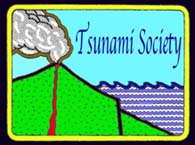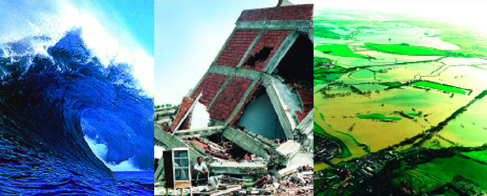ISSUES - Year 2009
ABSTRACTS
for Volume 28, No 2
NOAA/WEST COAST AND ALASKA TSUNAMI WARNING CENTER ATLANTIC OCEAN RESPONSE CRITERIA
Paul Whitmore - NOAA/West Coast/Alaska Tsunami Warning Center - Palmer, Alaska
Uri ten Brink – United States Geological Survey – Woods Hole, Massachusetts
Michael Caropolo – NOAA/National Weather Service – Wilmington, North Carolina
Victor Huerfano-Moreno – Puerto Rico Seismic Network – Mayaguez, Puerto Rico
William Knight - NOAA/West Coast/Alaska Tsunami Warning Center - Palmer, Alaska
William Sammler – NOAA/National Weather Service – Wakefield, Virginia
Al Sandrik – NOAA/National Weather Service – Jacksonville, Florida
ABSTRACT
West Coast/Alaska Tsunami Warning Center (WCATWC) response criteria for earthquakes occurring in the Atlantic and Caribbean basins are presented. Initial warning center decisions are based on an earthquake’s location, magnitude, depth, distance from coastal locations, and pre-computed threat estimates based on tsunami models computed from similar events. The new criteria will help limit the geographical extent of warnings and advisories to threatened regions, and complement the new operational tsunami product suite. Criteria are set for tsunamis generated by earthquakes, which are by far the main cause of tsunami generation (either directly through sea floor displacement or indirectly by triggering of sub-sea landslides).
The new criteria require development of a threat data base which sets warning or advisory zones based on location, magnitude, and pre-computed tsunami models. The models determine coastal tsunami amplitudes based on likely tsunami source parameters for a given event. Based on the computed amplitude, warning and advisory zones are pre-set.
Science of Tsunami Hazards, Vol. 28, No. 2, page 86 (2009)
NOAA/WEST COAST AND ALASKA TSUNAMI WARNING CENTER ATLANTIC OCEAN RESPONSE CRITERIA
------------------------------------------------------------------
NATURAL HAZARD ASSESSMENT OF SW MYANMAR -
A CONTRIBUTION OF REMOTE SENSING AND GIS METHODS TO THE DETECTION OF AREAS VULNERABLE TO EARTHQUAKES AND TSUNAMI / CYCLONE FLOODING
Barbara Theilen-Willige - Berlin University of Technology (TU Berlin), Institute of Applied Geosciences
George Pararas-Carayannis - Tsunami Society, Honolulu, Hawaii, USA
ABSTRACT
Myanmar, formerly Burma, is vulnerable to several natural hazards, such as earthquakes, cyclones, floods, tsunamis and landslides. The present study focuses on geomorphologic and geologic investigations of the south-western region of the country, based on satellite data (Shuttle Radar Topography Mission-SRTM, MODIS and LANDSAT). The main objective is to detect areas vulnerable to inundation by tsunami waves and cyclone surges. Since the region is also vulnerable to earthquake hazards, it is also important to identify seismotectonic patterns, the location of major active faults, and local site conditions that may enhance ground motions and earthquake intensities. As illustrated by this study, linear, topographic features related to subsurface tectonic features become clearly visible on SRTM-derived morphometric maps and on LANDSAT imagery. The GIS integrated evaluation of LANDSAT and SRTM data helps identify areas most susceptible to flooding and inundation by tsunamis and storm surges. Additionally, land elevation maps help identify sites greater than 10 m in elevation height, that would be suitable for the building of protective tsunami/cyclone shelters.
Science of Tsunami Hazards, Vol. 28, No. 2, page 108 (2009)
NATURAL HAZARD ASSESSMENT OF SW MYANMAR - A CONTRIBUTION OF REMOTE SENSING AND GIS METHODS TO THE DETECTION OF AREAS VULNERABLE TO EARTHQUAKES AND TSUNAMI / CYCLONE FLOODING
------------------------------------------------------------------
A NEW METHOD TO ANALYZE THE TSUNAMI INCITEMENT PROCESS AND SITE SELECTION FOR TSUNAMI OBSERVATIONS IN CHINA'S EASTERN SEA
Yuanqing Zhu - Earthquake Administration of Shanghai Municipality, China
Shuangqing Liu - National Geophysical Observatory at Sheshan, Shanghai, 200062, China
Yanlin Wen - National Geophysical Observatory at Sheshan, Shanghai, 200062, China
Yan Xue - National Geophysical Observatory at Sheshan, Shanghai, 200062, China
ABSTRACT
In this paper, we present a CONTROL volume model for tsunami incitement process by combining the Navier-Stokes equation, the jet theory and relative velocity model. We conclude that the initial condition for tsunami propagation simulation is equivalent to the static near-field seismic displacement of earthquake that induces the tsunami. The error analyzed from this method is only about 1 percent for a common seafloor earthquake, and it is consistent with the result of Ansys/Ls-dyna numerical analysis. EDGRN/EDCMP and COMCOT program provide some new acquirement for the tsunami studies. In the second part of the paper, we develop a site-selection method for anchor-grounded tsunami observation in Chinese eastern sea.
Science of Tsunami Hazards, Vol. 28, No. 2, page 129 (2009)
A NEW METHOD TO ANALYZE THE TSUNAMI INCITEMENT PROCESS AND SITE SELECTION FOR TSUNAMI OBSERVATIONS IN CHINA'S EASTERN SEA
------------------------------------------------------------------
PREDICTION OF TSUNAMI PROPAGATION IN THE PEARL RIVER ESTUARY
Sun J. S. - Dept of Civil & Structural Engineering, Hong Kong Polytechnic Univ, HONG KONG
Wai, O.W.H. - Dept of Civil & Structural Engineering, Hong Kong Polytechnic Univ, HONG KONG
Chau, K.T. - Dept of Civil & Structural Engineering, Hong Kong Polytechnic Univ, HONG KONG
Wong, R.H.C- Dept Civil & Structural Engineering, Hong Kong Polytechnic Univ, HONG KONG
ABSTRACT
Tsunamis entering into shallow water regions may become highly nonlinear and this may be due to the irregularity of sea bottom roughness relative to the water depth and the complex coastline geometry. The elliptic mild-slope equation is commonly used to predict the nonlinear wave propagation in shallow water regions but it requires huge amount of computer resources which may not be practical for tsunami propagation predictions. An efficient finite element approach has been adopted in the present project to resolve the nonlinear problem of wave transformation in near shore zones as well as to better conform the model grids to any complex coastline configurations. The efficient approach is based on the wave action conservation equation that takes into account of wave refraction-diffraction and energy dissipation due to bottom roughness. An operator splitting scheme is employed to solve the wave action conservation equation. Firstly, to increase numerical stability, the Eulerian-Lagrangian method is applied to solve the advection terms in the equation. The horizontal terms are then discretized by an implicit finite element method and, finally, the vertical terms are approximated by an implicit finite difference method. A nominal-time iteration method is used to efficiently solve the non-linear irrotational wave number equation for the wave direction. Over 6000 nine-node elements have been used to mesh the Pearl River estuary region. The boundary conditions are based on the results obtained from a simulation applied for a larger computation domain encompassing the entire South China Sea. The computed result provides a general picture of tsunami propagation in the desired region. Model validation and result verification, however, are necessary for any future prediction exercises.
Science of Tsunami Hazards, Vol. 28, No. 2, page 142 (2009)
PREDICTION OF TSUNAMI PROPAGATION IN THE PEARL RIVER ESTUARY
------------------------------------------------------------------
Copyright © 2009 - TSUNAMI SOCIETY
TSUNAMI SOCIETY, 1741 Ala Moana Blvd. #70, Honolulu, HI 96815, USA.
WWW.TSUNAMISOCIETY.ORG




